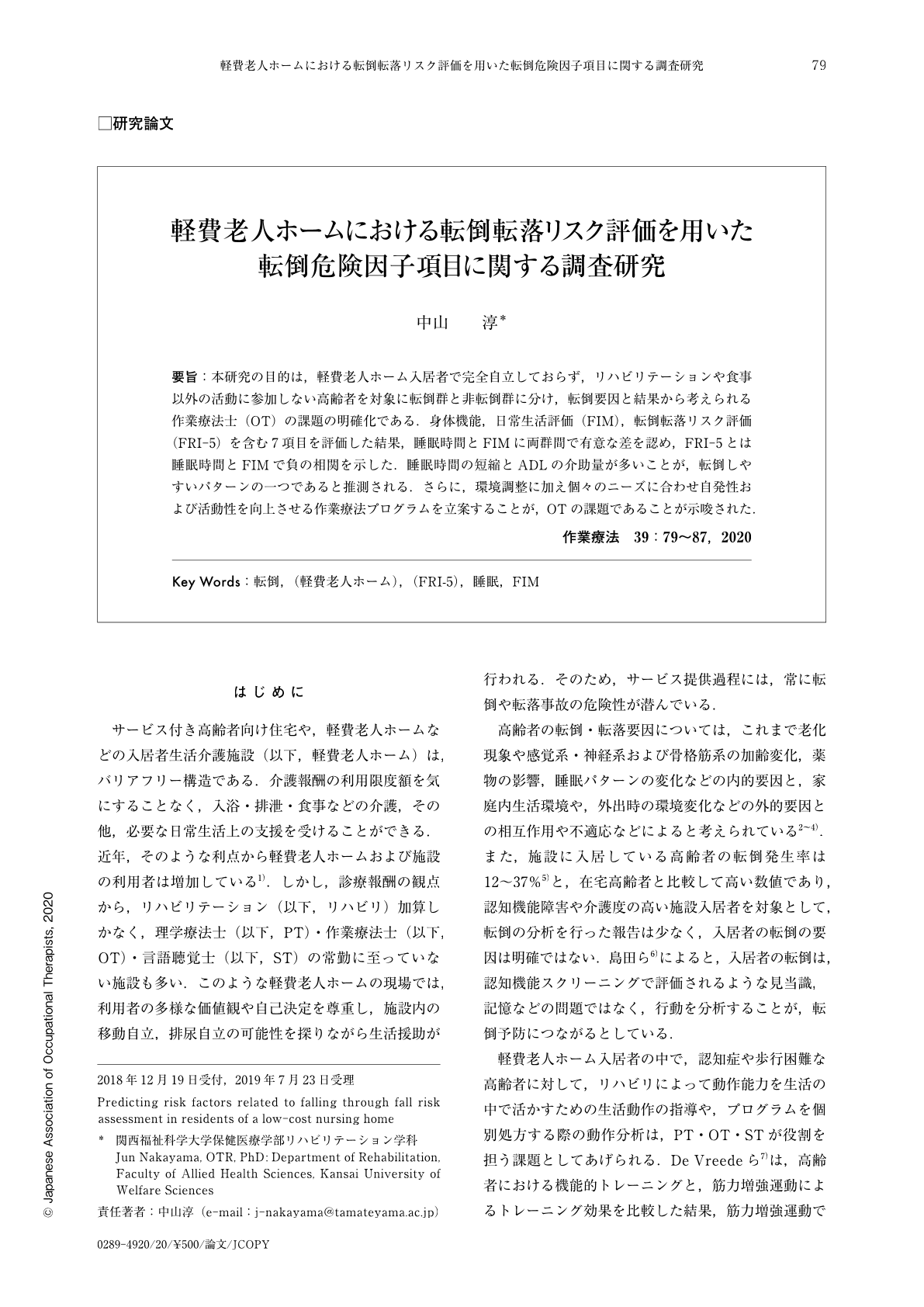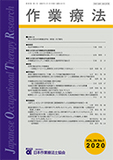Japanese
English
- 販売していません
- Abstract 文献概要
- 1ページ目 Look Inside
- 参考文献 Reference
要旨:本研究の目的は,軽費老人ホーム入居者で完全自立しておらず,リハビリテーションや食事以外の活動に参加しない高齢者を対象に転倒群と非転倒群に分け,転倒要因と結果から考えられる作業療法士(OT)の課題の明確化である.身体機能,日常生活評価(FIM),転倒転落リスク評価(FRI-5)を含む7項目を評価した結果,睡眠時間とFIMに両群間で有意な差を認め,FRI-5とは睡眠時間とFIMで負の相関を示した.睡眠時間の短縮とADLの介助量が多いことが,転倒しやすいパターンの一つであると推測される.さらに,環境調整に加え個々のニーズに合わせ自発性および活動性を向上させる作業療法プログラムを立案することが,OTの課題であることが示唆された.
The elderly in low-cost nursing homes who did not participate in activities other than FIM correction independence, rehabilitation, and meals were enrolled in a study and divided into 2 groups (fall and non-fall groups), and the details of falls and fall factors were investigated. In addition, considering the roles of OTs from the results, we evaluated the relationship between seven items, including physical function, the amount of assistance for daily living (FIM), and the fall risk index (FRI-5). As a result, significant differences were found between sleep duration and FIM between the two groups, and FRI-5 was negatively correlated with sleep duration and FIM. Therefore, we concluded that shorter sleep duration and having a large amount of assistance for ADL were patterns that were easy to turnover. In addition to environmental adjustments, the design of occupational therapy programs that improves spontaneity and activity levels to meet individual needs is warranted.

Copyright © 2020, Japanese Association of Occupational Therapists. All rights reserved.


